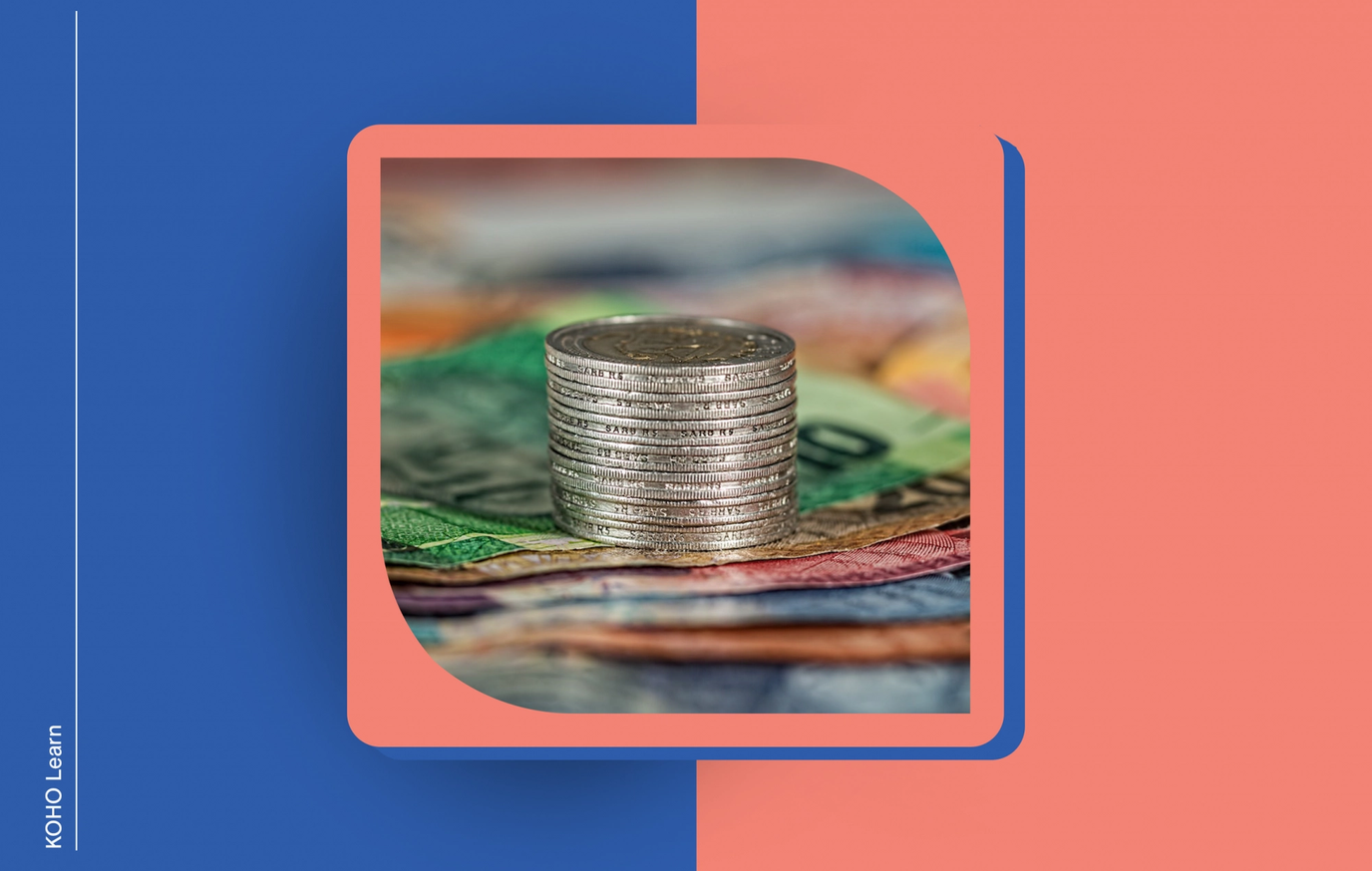Back
Is my money safe with KOHO?
7 min read

Written By
Dan Bucherer
Rounding it up
Identity thieves are smart and have lots of tools at their disposal that they can use to try to steal information. This includes software like keyloggers, website exploits, and even social engineering activities.
Your money is safe with KOHO, but you have to do your part to reduce fraud, too.
KOHO uses industry-leading security systems, and it offers tools like virtual cards and the ability to lock your card in the app at any time in order to keep you safe.
Fraud is ever-present and to suggest otherwise is disingenuous. As a result, KOHO is committed to keeping you as safe as possible and mitigating any financial damage if and when fraud occurs.
If there’s one thing that we often overlook in our everyday life, it's internet security. There are password requirements for websites but, gosh, we have to remember all of them.
Two-factor authentication? Ugh…what a hassle. Phone PINs, secret passwords, and biometrics…it can be hard to stay on top of it all. Still, security is just like a good warranty program—you don’t realize how much you need it until you really, really do.
But as time has gone on, we’ve all gotten a little better at keeping our personal information secure and we’ve adapted to put our security first. Doesn’t it make sense, then, that the companies with which we do business—especially financial institutions—should do the same thing?
The good news? At KOHO, we take that commitment to heart. In fact, it’s one of the foundational aspects of our company and everything we do.
So is your money safe at KOHO? It sure is. But let's look at how KOHO keeps your money safe and what you need to do to protect yourself from identity theft.
How Do Thieves Steal Financial Data?
Thieves will do just about anything to get their hands on your data, and this goes double for anything having to do with your finances.
While financial accounts might seem like an obvious target for a thief, many hackers consider them to be just one part of their overall plan. Many thieves are also looking to get access to your other accounts so that they can get access to your contacts and attempt to defraud them as well.
Once they have your identity, a thief can open a credit card in your name or apply for government benefits on your behalf. As you can imagine, recovering from such a theft can be a time-consuming and difficult process.
So how are thieves actually stealing this data in the first place? Here’s what you need to know.
Identity Thieves That Target Individuals
Identity thieves use a number of tactics to target individuals, such as:
Keylogging – Keylogging is exactly what it sounds like. A thief can install a malicious program on your computer that allows them to log every single click and tap you make on a keyboard. This means they can track how you use the computer and collect your usernames and passwords.
Unsecured Wi-Fi Connections – Wi-Fi is an essential part of our daily lives. But you need to pay a lot of attention to what Wi-Fi networks you connect to. It’s incredibly easy for thieves to steal data from an unsecured network, like one at a coffee shop, by simply monitoring web traffic. As a result, it’s usually best not to connect to online banking and other sensitive websites while on unsecured Wi-Fi networks. Thieves can also create their own Wi-Fi networks with nothing more than an internet connection and a router. By creating a network name that seems innocuous, like ‘Free Public Wi-Fi,’ thieves can quickly and easily steal any information you send over the connection.
Public Computers – You’ve likely used a public computer at a hotel or airport to print tickets, gather information for a trip, and do other little tasks. But these computers are susceptible to thieves because they’re often not inspected for security. You should never use a public computer for more than exactly what you need, and you should always give it a once-over before you start. Does it look to be in good shape? Is there any extra equipment around the machine that looks out of place? If so, it’s probably best avoided.
Identity Thieves That Target Companies
Sometimes it makes more sense for a thief to hack the companies with which you do business than to target you directly. That’s because doing so allows them to get right to the source of the information they want, and it gives them the opportunity to target multiple victims.
Hackers use a number of tactics to target companies, such as:
Direct Hacking – Companies use lots of software and a variety of different machines that can connect to the internet. Despite our best efforts, thieves can access these by exploiting vulnerabilities in the code or in hardware that a major company uses so that they can leak data to the dark web.
Intercepting Traffic – Security happens on both ends. You may be extra vigilant about where you connect to the internet and the type of information you share with a website, but that website could be mishandling it as well. Thieves can exploit loopholes on websites to gather a great deal of information, from login credentials to account-level access.
Identity Thieves Also Use Social Engineering
Many people think that hacking is all about code and computers, but in reality, one of the most common and effective forms of illegal data-gathering is social engineering. This is simply the practice of getting individuals, whether they are customers or staff members of an organization, to divulge information they’re not supposed to.
The most common way this is done is via fraudulent password resets. In these situations, a thief will be able to gather some of your personal information from a previous leak and call a company to reset a password for your online account. By using the information they have, and by doing a bit of sweet-talking with the customer service agent, thieves can gain access to your accounts. Yikes!
How Does KOHO Protect My Identity and Accounts?
KOHO goes to the ends of the Earth to keep your data and identity safe and secure. After all, a good financial relationship is built on trust, and we want you to be able to trust us. At KOHO, we use industry-leading security systems that are similar to or even better than what you’d find at any other federally-chartered bank in Canada.
KOHO offers several key services that can help you keep your account safe and secure, too. This includes:
Lock Your Card In-App – At any time, you can lock your KOHO card in the app. Left it in a taxi? Kid took it? Gave it to a “friend” who decided to use it for a free vacation? Lock it up! Then let us know if you suspect fraud on your account so we can fix the situation.
Virtual Card Numbers – KOHO prepaid Mastercards come standard with virtual card features. These virtual cards mask your actual card number and are only good for one use. By not disclosing your real card number to a merchant, you limit the damage that a fraudster can do to your account.
Excellent Customer Support – Our friendly customer support agents are available 24/7 to help you keep things secure with your account. If you ever have an issue or a concern with your account, simply reach out and we’ll do everything we can to make it right.
CDIC Insurance – If you were paying attention to the news around the year 2008, you know that banks can fail. Thankfully, bank failure is very rare. But if— and that’s a ginormous if—KOHO were to ever fail, rest assured that if you opt in to Earn Interest, your balance is held in trust with one or more CDIC member institutions, even though KOHO itself is not a member institution. The Canada Deposit Insurance Corporation, or CDIC, is a Crown Corporation that provides deposit insurance for eligible deposits held at CDIC member institutions in case of a member institution’s failure. CDIC insures eligible deposits held in trust up to $100,000 per beneficiary, per member institution, provided that KOHO meets certain disclosure requirements.
Steps You Can Take To Protect Your Account Information
At KOHO, we can do everything we can to keep your data safe. But there are a few things that you can do to help protect yourself, such as:
Secure Passwords – The days are over when you can get away with using something like 'Password1’ or your cat’s name as a password. These sorts of simple passwords are much too easy to guess or hack in a matter of minutes. Ideally, your password should be long, complex, and difficult to guess. A password should also use a mix of letters, numbers, and symbols. Even better, consider using a passphrase instead of a password to keep your account secure. It’s also worth changing passwords regularly so that you’re always one step ahead of hackers.
Two-Factor Authentication – One of the best ways you can protect yourself in our modern world is by using two-factor authentication. With two-factor authentication, you need to enter a code that you receive via text, email, or authentication app in addition to your regular username and password. Authentication apps are considered superior to text messages and emails due to the risks of SIM swapping, but anything is better than nothing.
Monitor Your Credit Report – Regularly checking your credit report can help you quickly identify any fraudulent activity, like a credit card that was opened in your name. Leaving incorrect information on your score for a long time can cause it to drop substantially, so being proactive and reporting false information on your report is important.
Watch for Phishing Scams – Thieves will often call or email their victims to ask for information directly in a tactic known as phishing. This is commonly seen online, where a malicious website will display a message that software is out of date and needs to be fixed by an agent over the phone. The agent will ask for all sorts of information (frankly, whatever they can get) and steal your identity. Always think carefully about to whom you’re giving information. Did someone from your “bank” call you claiming they need information? Hang up and call the bank back via the phone number they supply on their website. In short, be skeptical of everything until proven otherwise.
Fraud Happens. Are You Prepared?
Any bank or company that tells you that they can 100% protect you from identity theft is not being truthful.
More than 70% of Canadians have been subject to fraudulent requests for information over the last few years. With statistics like that, pretty much everyone can expect to deal with some funny business during their lifetime, regardless of who they bank with.
While no company can prevent all fraud, KOHO does everything it can to keep your information secure. If your information does leak, KOHO will also take every step necessary to mitigate the damage so you can get back to normal as quickly and efficiently as possible.

About the author
Dan is a runner and writer living in the Washington, D.C. area, where he currently works for a financial services trade association as the Communications Director.
Read more about this author